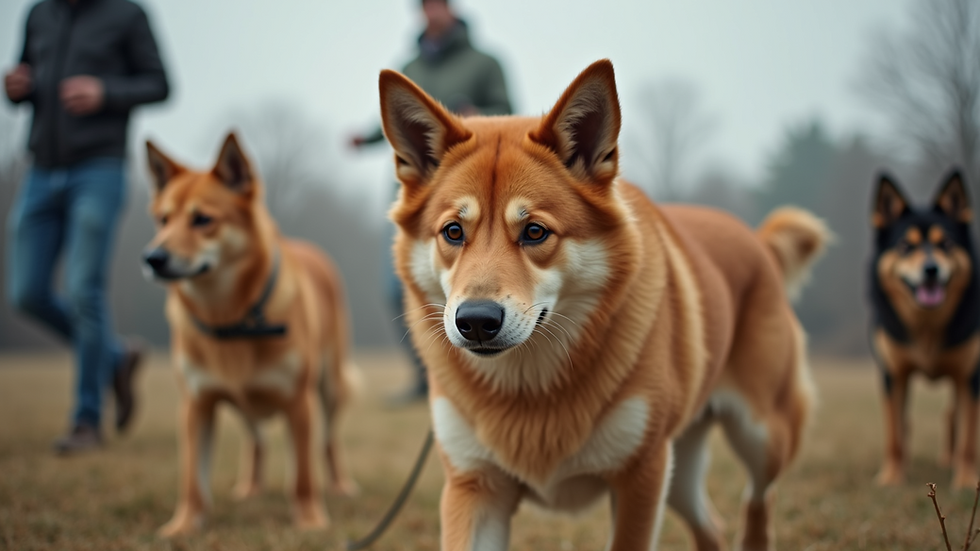Essential Commands Every Dog Should Know
- Elton Hill
- Aug 26
- 4 min read
Training your dog is one of the most rewarding experiences you can share with your furry friend. Teaching essential commands not only improves communication but also ensures safety and strengthens your bond. Whether you have a playful puppy or an older dog, mastering basic obedience commands is crucial for a well-behaved companion.
Dogs thrive on structure and clear expectations. When you teach them commands, you provide guidance that helps them understand what behavior is acceptable. This article will walk you through the most important commands every dog should know, practical tips for training, and how to maintain consistency for lasting results.
Why Basic Obedience is Important for Your Dog
Basic obedience training is the foundation of a happy and healthy relationship between you and your dog. It helps prevent behavioral problems and keeps your dog safe in various situations. For example, a reliable "come" command can prevent your dog from running into dangerous areas like busy streets.
Training also stimulates your dog mentally and physically, reducing boredom and destructive behaviors. Dogs that know basic commands tend to be more confident and less anxious because they understand their role in the family pack.
If you want to start your dog’s training journey, consider professional guidance. Services that focus on basic obedience for dogs can provide personalized support and techniques tailored to your dog’s needs.

Essential Commands Every Dog Should Learn
Teaching your dog essential commands can be broken down into manageable steps. Here are the key commands every dog should know:
1. Sit
The "sit" command is often the first one taught because it is simple and useful. It helps your dog stay calm and focused. To teach "sit," hold a treat close to your dog’s nose and slowly move it upward. As their head follows the treat, their bottom will naturally lower to the ground. Once seated, say "sit" and reward them immediately.
2. Stay
"Stay" teaches your dog patience and control. Start by asking your dog to sit. Then, hold your hand out like a stop sign and say "stay." Take a step back, and if your dog remains in place, reward them. Gradually increase the distance and duration.
3. Come
The "come" command is vital for safety. Use a happy tone and say "come" while gently pulling on a leash or using a treat to encourage your dog to approach. Reward generously when they obey. Practice in a secure area before trying off-leash.
4. Down
"Down" helps calm your dog and is useful in many situations. From a sitting position, hold a treat near the ground and say "down." When your dog lies down, reward them. This command can also help reduce jumping and hyperactivity.
5. Leave It
This command prevents your dog from picking up dangerous or unwanted items. Hold a treat in your closed hand and say "leave it." When your dog stops trying to get the treat and looks away, reward them with a different treat. Practice with various objects to reinforce the behavior.
6. Heel
"Heel" teaches your dog to walk calmly beside you without pulling on the leash. Start walking and say "heel" while holding treats at your side. Reward your dog for staying close. This command makes walks more enjoyable and controlled.

What are the 5 D's of Dog Training?
Understanding the 5 D's of dog training can help you approach training with a clear strategy. These principles guide how to effectively teach your dog new behaviors.
1. Duration
Duration refers to how long your dog can maintain a command. Start with short periods and gradually increase the time your dog stays in position, such as sitting or staying.
2. Distraction
Distraction means training your dog to obey commands even when there are distractions around. Begin in a quiet environment and slowly introduce distractions like other people, noises, or other animals.
3. Distance
Distance involves increasing the space between you and your dog while they obey commands. This helps your dog learn to respond even when you are not right next to them.
4. Difficulty
Difficulty refers to the complexity of the commands or the environment. As your dog masters basic commands, increase the challenge by adding new commands or practicing in different locations.
5. Drive
Drive is your dog’s motivation to perform a command. Use high-value treats, toys, or praise to keep your dog engaged and eager to learn.
By focusing on these 5 D's, you can build a strong foundation for your dog's obedience and ensure they respond reliably in various situations.
Tips for Successful Dog Training
Training your dog requires patience, consistency, and positive reinforcement. Here are some practical tips to help you succeed:
Keep training sessions short and frequent: Aim for 5-10 minute sessions multiple times a day to keep your dog engaged without overwhelming them.
Use positive reinforcement: Reward good behavior with treats, praise, or playtime. Avoid punishment, which can create fear and confusion.
Be consistent with commands and cues: Use the same words and hand signals every time to avoid confusing your dog.
Practice in different environments: Train at home, in the park, and other places to help your dog generalize commands.
Be patient and calm: Dogs learn at their own pace. Stay calm and encouraging, even if progress seems slow.
If you encounter challenges, consider seeking help from a professional trainer who can provide personalized advice and techniques.

Maintaining Your Dog’s Training Over Time
Training is not a one-time event but an ongoing process. To keep your dog’s skills sharp:
Regularly review commands: Practice commands daily to reinforce learning.
Increase challenges gradually: Add distractions, distance, and duration to keep your dog attentive.
Incorporate training into daily life: Use commands during walks, playtime, and feeding.
Celebrate progress: Reward your dog for good behavior to maintain motivation.
By maintaining training, you ensure your dog remains well-behaved and responsive throughout their life.
Training your dog with essential commands is a gift that benefits both of you. It creates a safer environment, reduces stress, and deepens your connection. Start today with simple commands and watch your dog grow into a confident, obedient companion.




Comments